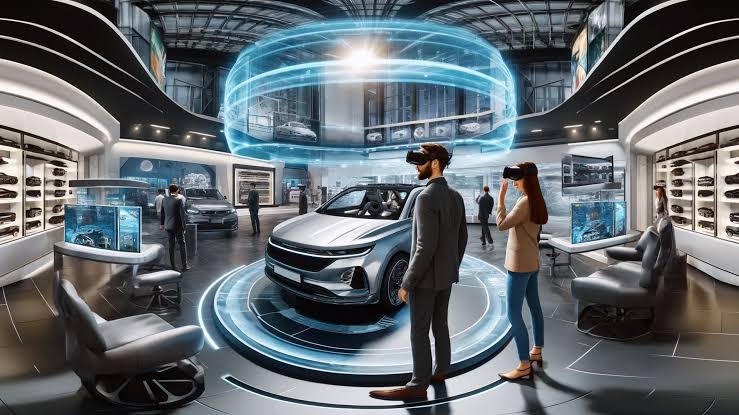Discover the transformative power of 360-degree videography in storytelling. Explore its technology, applications across industries, and best practices for creating immersive experiences that engage audiences like never before. Learn how this innovative medium enhances marketing, education, and entertainment, paving the way for the future of content creation.
As digital media competes for audiences 360-degree videography has surfaced as a revolutionary approach, to storytelling. This cutting edge method provides viewers with an experience enabling them to interact with content in ways that conventional video formats cannot match. This article delves into the nature of 360-degree videography its uses the underlying technology and the benefits it offers, in storytelling.
Understanding 360-Degree Videography
At its essence 360 degree videography captures a scene in all directions at once. This is done using cameras with lenses that can record footage. The outcome is a video that allows viewers to explore the space by adjusting their perspective making them feel like they are part of the scene. This immersive aspect distinguishes degree videography from traditional video formats where viewers are limited to a fixed angle.
The technology behind degree videography involves equipment and software. The cameras used for this type of videography vary from models to setups that utilize cameras working together. Quality 360 degree cameras often come with stitching software that merges footage from lenses into a panoramic view.
Apart from the components software is essential, in the process. Tools designed for video editing enable creators to improve the footage apply effects and enhance the overall viewer experience. Additionally this software supports the incorporation of features allowing viewers to interact with the content.
Applications of 360-Degree Videography
The flexibility of 360-degree videography has led to its use, across industries improving storytelling in various scenarios. In the field of entertainment filmmakers and content creators are using this approach to engage audiences in narrative journeys. Whether its virtual reality movies or immersive documentaries 360-degree videography enables viewers to feel like participants in the story instead of just onlookers.
In the travel sector 360-degree videos have revolutionized how destinations are promoted. Tour operators and travel agencies leverage this format to offer potential travelers immersive glimpses of locations making it easier for them to picture themselves exploring the destination. Viewers can discover landscapes, attractions and accommodations in a way that traditional promotional videos simply cannot match.
Additionally the use of videography is gaining traction, in the field of education and training. Educational institutions are utilizing this innovative technology to develop interactive learning opportunities. For example medical students can explore a simulated surgical operation providing them with exposure to situations within a safe setting. Likewise businesses are incorporating 360 degree videos into their employee onboarding process allowing newcomers to engage with the companys values and guidelines in a hands on manner.
Enhancing Marketing and Brand Engagement
In the realm of marketing competition businesses are constantly on the lookout for fresh approaches to grab consumer interest. One such approach is the use of videography which offers a way to provide audiences with an immersive and unforgettable experience. Brands can utilize this format to share their narratives, highlight products and build a connection with their audience.
By incorporating videos into their marketing tactics brands can significantly boost user engagement. The captivating nature of medium prompts viewers to engage with the content leading to increased brand recognition and affinity. For instance a car company could set up a virtual showroom allowing potential buyers to examine vehicles from angles, mimicking the experience of visiting a physical dealership.
Challenges and Considerations
While 360-degree videography offers benefits it also comes with its own set of challenges. The process of creating such videos can be more intricate and time consuming compared, to traditional methods. It involves coordinating cameras managing lighting and ensuring seamless stitching, which all require careful planning and expertise.
Moreover not all viewers may have the equipment needed to fully enjoy videos. Although various platforms allow viewing on devices the experience is best with reality headsets. Therefore content creators must keep in mind their audience and the platforms they plan to use for distribution.
To make the most out of 360 degree videography creators should follow some practices. First thorough planning is essential before the shoot. Think about the story you want to convey and the types of interactions you want viewers to have in the scene. This foresight will guide camera placement and movement during filming.
Next, make sure that the lighting is uniform in the entire scene. Inconsistent lighting can take away from the immersive experience and complicate the stitching process during editing. Moreover using sound quality is crucial since sound greatly contributes to immersion. Think about using audio techniques to improve the auditory experience.
Lastly focus on keeping the viewers engaged. Adding elements like clickable hotspots or prompts to explore specific areas can greatly enrich the storytelling experience. These features not grab the audiences attention. Also motivate them to delve deeper into the content.
Conclusion
360-degree videography marks a breakthrough, in the development of storytelling providing a platform, for immersive experiences. With ongoing technological progress the possibilities for this medium are set to grow reshaping how we engage with content. By grasping the details of videography and following guidelines creators can weave captivating stories that deeply resonate with audiences. This cutting edge method not enhances storytelling. Also nurtures stronger bonds, between creators and viewers opening doors to the future of content.
